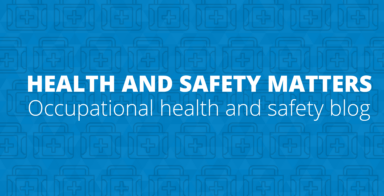All of us have experienced stress at one time or another. Stress is ubiquitous, impacting many areas of our lives in both good and unhealthy ways. Good stress is the type of stress you might feel when you’re excited – such as trying a new thing for the first time or reacting to a sudden threat like getting out of the way of a speeding car. Stress is a natural response to demanding or challenging situations and an essential part of the body’s fight or flight response. However, when stress becomes chronic it can significantly affect physical and mental health. The impacts of chronic stress include headaches, high blood pressure, insomnia, weight gain, anxiety, chronic pain, and heart disease.
Workplace stress is a significant problem that affects individuals and companies. It has negative consequences, such as reduced productivity, high employee turnover, and health challenges. Individuals and companies must identify the causes of stress and take the necessary steps to manage it. Organizations can establish a supportive work culture, invest in health, safety, and wellness programs, and establish a work-life balance. By doing so, employees can function effectively, leading to a safe and healthy workplace culture.
The caring nature of many working in health care has them put the needs of their patients, residents, and clients ahead of their own. This focus on others can often prevent or delay them from getting the health they need for their mental wellness. Healthcare workers are at an increased risk of developing mental health problems like anxiety and depression. This risk is exceptionally high during times of crisis or high demand, such as the COVID-19 pandemic. The stigma surrounding mental health problems can make it difficult for healthcare workers to seek help, leading to a culture of silence and suffering.
Another consequence of chronic stress in healthcare professionals is fatigue. Fatigue contributes to burnout, with tired and overwhelmed employees feeling less effective and engaged. Burnout is a psychological syndrome characterized by emotional exhaustion, depersonalization, and reduced personal accomplishment. Burnout is prevalent among healthcare workers, with studies showing that up to 45% of healthcare workers in Canada experience burnout. Burnout decreases job satisfaction, increases workplace injuries and can contribute to healthcare professionals leaving or seeking early retirement.
It is essential to address the impact of stress in the workplace for healthcare workers to ensure high-quality patient care and the well-being of care workers. There are several strategies that healthcare organizations and individuals can use to mitigate the effects of stress and burnout.
If you are experiencing workplace stress:
- Learn relaxation techniques such as meditation, yoga, or mindful walking.
- Use breathing exercises such as box breathing – here is an excellent video from Sunnybrook Hospital – https://www.youtube.com/watch?v=tEmt1Znux58.
- Communicate with your supervisor and be honest about how your workload and stress affect you. Ask for help and support.
- Seek counselling–many workplaces have employee assistance programs. You can also contact the Care to Speak peer support line for free and confidential support.
Employers can support staff experiencing workplace stress by:
- Promoting work-life balance is one of the most effective strategies for mitigating stress and burnout. Healthcare workers need time to rest, recover, and engage in activities outside of work to maintain their well-being. Organizations can support work-life balance by offering flexible schedules, providing adequate time off, and encouraging employees to take breaks and vacations.
- Providing support and resources for mental health, such as counselling, employee assistance programs, and support groups. Organizations can also offer training and education on stress management, resilience-building techniques, and mindfulness.
- Communicating and collaborating to mitigate the effects of stress in the workplace. Healthcare workers need to feel supported and connected to their colleagues and supervisors to reduce feelings of isolation and overwhelm. Organizations can promote communication and collaboration by fostering a culture of openness and teamwork and providing opportunities for team building and socialization.
- Encouraging self-care and providing your team with resources and support whenever possible. When internal resources are unavailable, point employees to free apps and services for self-care and mental wellness, such as Care for Caregivers.
Workplace stress is a significant problem affecting healthcare workers’ physical and mental well-being, performance, and quality of care. Employers have a critical role in mitigating these negative impacts by creating a supportive work culture, promoting work-life balance, and investing in employee wellness programs. By taking these steps, employers can improve the quality of care provided and create a healthier workplace environment for their healthcare workers. Ultimately, this will benefit everyone involved, from care workers to residents, patients, clients, and organizations.
Resources:








